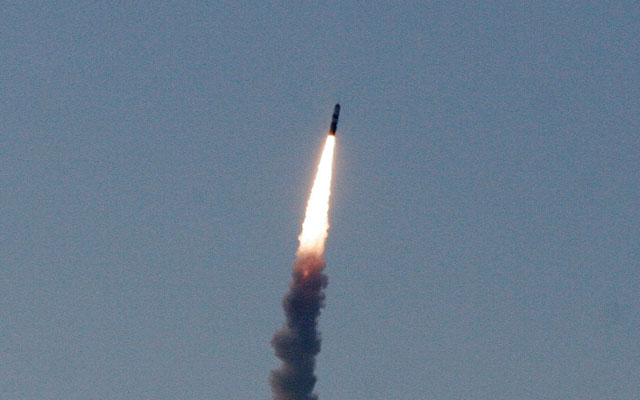Last Wednesday, off the coast of Kauai, Hawaii, the Navy cruiser USS Lake Erie conducted a successful test of the next-generation missile defense weapon, engaging and destroying a dummy target warhead that had separated from a short-range attacking rocket.
The Standard Missile-3 (SM-3) is designed to seek and kill both attacking rockets and the warheads they carry. This next generation of the SM-3 interceptor is called the Block IB (SM-3 Block IB).
The Daily Signal depends on the support of readers like you. Donate now
This is the third successful intercept test of the cutting-edge interceptor since its first test resulted in a failure to destroy the target on September 1, 2011. With this most recent test, the SM-3 Block IB program is now on track to provide a key element of the second phase of the Administration’s Phased Adaptive Approach (PAA) missile defense program.
This second phase includes basing the SM-3 Block IB interceptors on both Navy ships and on land in Romania by 2015. These three successful tests have put the SM-3 Block IB program back on track to meeting the 2015 deadline.
However, sequestration could result in the outright cancellation of the European element of the PAA. This would be a major setback.
There are two critical lessons stemming from the combination of the three successful SM-3 Block IB interceptor tests and the failure in September 2001. First, a failure to achieve an intercept can potentially teach as much as a successful one. In this case, the proper response is to move forward with follow-on tests and not back off the program.
The second lesson is that it is wise to pursue a development program for next-generation military technology with a considerable degree of concurrency—that is, the stages of development should be pursued in an overlapping fashion rather than sequentially.
The Government Accountability Office (GAO) has long argued against concurrency, which it believes involves too much risk. But a strict interpretation of the GAO recommendation for avoiding concurrency, in the case of the SM-3 Block IB program, could easily have resulted in a failure to meet the 2015 deadline and needlessly weaken our defensive capability.
The current status of the SM-3 Block IB development program demonstrates that the GAO is underplaying the cost of pursuing military technology programs in a strictly sequential fashion. Accordingly, other missile defense development programs should pursue concurrency.































